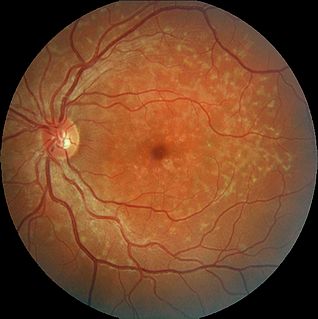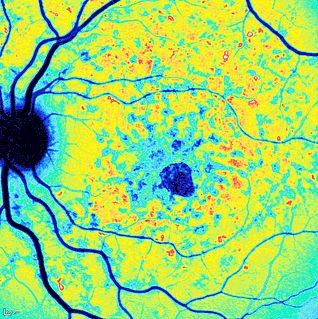You are here: vision-research.eu » Vision Research » Vision in the European Focus » 2015 » Novel therapy for ABCA4-related retinal dystrophies.
Novel therapy for ABCA4-related retinal dystrophies.

Modified vitamin A rescues the phenotype of the Abca4-/- mouse model for Stargardt disease
Ophthalmologists and scientists from the Universities of Oxford, Bonn and New York (Columbia) have demonstrated efficiency of a novel treatment strategy for patients with Stargardt disease. This condition affects around 1 in 10,000 people and begins in childhood leading to progressive loss of central vision. Stargardt disease is linked to defects on a gene known as ABCA4. A common finding across patients is an increased accumulation of lipofuscin in the retinal pigment epithelium, resembling substantial premature aging of the retina. To date, there is no treatment for Stargardt disease.
 |
In Robert MacLaren’s Oxford-based lab, a team led by Peter Charbel Issa aimed at correcting the phenotype of the Abca4-/- mouse model for Stargardt disease which is characterized by massive accumulation of lipocuscin in the retinal pigment epithelium - similar to the human phenotype. The team hypothesised that accumulation of lipofuscin was triggered by the formation of dimers derived from vitamin A. To test this theory they used a modified vitamin A developed by Ilyas Washington, a chemist at Columbia University, which had deuterium atoms in place of hydrogen at a critical position on the vitamin A molecule. The modified vitamin A was administered in the diet of the mouse model. The incorporation of deuterium atoms on the vitamin prevented it from forming dimers, resulting in dramatically reduced lipofuscin formation. The treatment was also shown to be safe in both mutant and normal mice.
Peter Charbel Issa said: ‘Vitamin A dimerization was shown to be responsible for around half of the lipofuscin found in the RPE. If we can reduce the rate at which vitamin A dimerizes, we could reduce the genetically-induced build-up of lipofuscin and slow down the progress of retinal degeneration. We also wanted to check if the altered vitamin A could cause any side-effects in humans that might affect sight in another way, for example by damaging peripheral or low-light vision. However, tests showed that this was not the case – there was no adverse outcome in both normal and mutant mice fed the deuterated vitamin A.’
Robert MacLaren who supervised the project at the Nuffield Laboratory of Ophthalmology added: “Stargardt disease affects many children I see in my clinic and ABCA4-related retinal degenerations are also common in adults. The finding that a safe and simple dietary modification may help them is extremely promising. Our analysis has provided further scientific validation for the concept and value of inhibiting vitamin A dimerization as treatment for this disease. We look forward to the next step of clinical trials.”
A clinical trial investigating the tolerability and effects of the deuterized vitamin A on Stargardt disease has just been started (ClinicalTrials identifier: NCT02402660).
More information
- The original publication: http://www.pnas.org/content/early/2015/06/23/1506960112.abstract
- Press Release by the University of Oxford: http://www.ox.ac.uk/news/2015-06-22-research-shows-possible-way-prevent-degenerative-eye-condition
- German Press Release by the University of Bonn: http://www3.uni-bonn.de/Pressemitteilungen/134-2015
Contact
Prof. Dr. Dr. Peter Charbel Issa
Pro Retina-Stiftungsprofessor für
degenerative Netzhauterkrankungen
Universitäts-Augenklinik Bonn
Phone: +49 (0) 228 / 287-15505
E-Mail: peter.issa@ukb.uni-bonn.de




